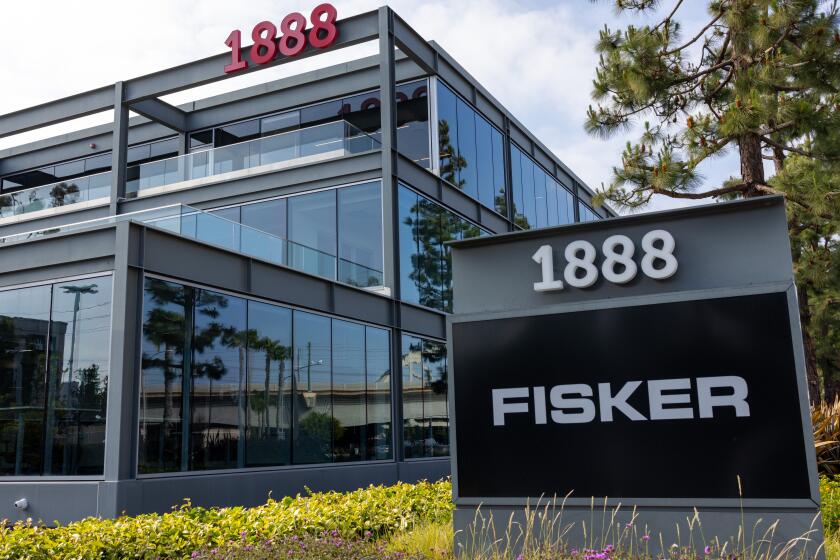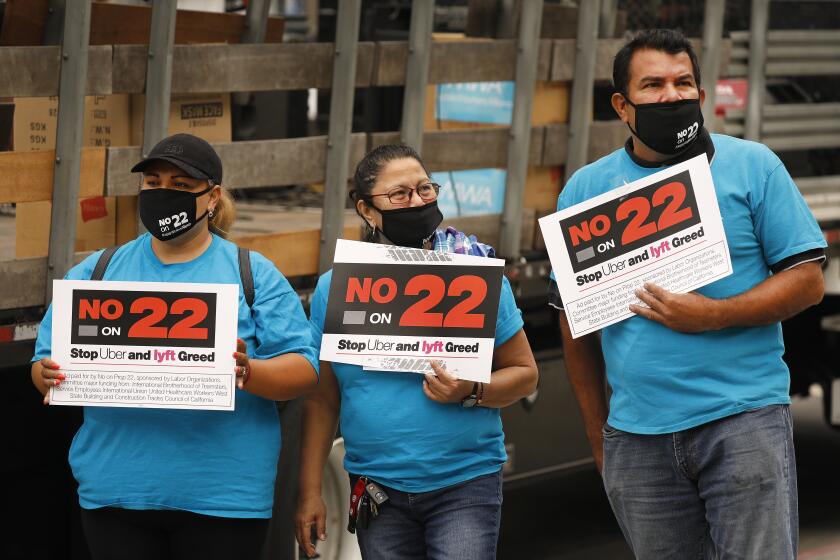Can Rebels Revive the Labor Movement?
The announcement this month that five prominent labor leaders were forming their own organization, “Change to Win,” may well be the first step toward a breakup of the AFL-CIO at its annual convention next month.
Conservatives in politics and business are gleeful at the prospect, while many ordinary citizens merely shrug their shoulders. Only one out of nine American workers are represented by a trade union, down from more than one-third of the workforce 50 years ago, so the fragmentation of the AFL-CIO would seem to have little impact on the majority of Americans.
But the fate of our nation is inexorably intertwined with the future of the labor movement. Trade unionism, even in its shrunken state, sets the economic and social standards upon which the work lives of tens of millions depend, even as it still provides the most continuous, effective political counterweight to the ascendancy of the Reagan-Bush conservatives.
Andrew Stern, the impatient president of the 1.8-million-member Service Employees International Union, is leading the revolt inside the AFL-CIO because he fears the outright destruction of the unions, and with it the abandonment of the political and social agenda that has guided American democrats for nearly a century. He wants to put new energy and more money into organizing.
But is a breakup of the AFL-CIO -- which Stern has repeatedly threatened -- the most effective way to revitalize labor’s fortunes in these difficult times?
A look at the history of the labor movement might help provide an answer. The Depression, which made one out of four workers unemployed, coincided with the emergence of giant corporations that seemed to pose a new threat to the values of the republic.
In those days, President Franklin D. Roosevelt and other New Dealers thought the rise of a powerful trade union movement essential: By raising wages they would increase people’s purchasing power, thus creating the demand necessary to put thousands of factories back in operation. And trade unionism would bring “industrial democracy” to the workplace, safeguarding America against the “economic royalists” the New Dealers thought so subversive to the democratic idea.
But leaders of the American Federation of Labor were unwilling to organize, even after the 1935 Wagner Act guaranteed unions the right to organize, strike and collectively bargain. They wanted just the skilled workers, and many in the AFL were disdainful of the blacks and Eastern European immigrants who did the hard work in the auto, steel and rubber factories.
This was the crisis faced by John L. Lewis of the United Mine Workers and Sidney Hillman of the Amalgamated Clothing Workers when they formed the rival “Committee for Industrial Organization” in 1935.
They would use the Wagner Act to organize the millions spurned by the AFL’s stolid leaders. By encouraging militancy, hiring hundreds of radical organizers and opening the unions to European ethnic groups, Mexican Americans and blacks, the CIO sparked a rebirth of the trade union movement.
Within a decade, organized labor had recruited 10 million new members, and by 1955, when the AFL and the CIO were reunited, American unions were on their way to doubling, within a single generation, the real wages of the entire working population.
Collective bargaining in all the key industries seemed an integral, democratizing pillar of the U.S. economic order. But in the years that followed, trade union leaders grew complacent.
Under the leadership of the hawkish George Meany -- some may remember the scowl and the big cigar -- the AFL-CIO in the 1950s and 1960s became a sleepy monopoly, and a not-so-liberal establishment at that.
Many unions stopped organizing and others proved indifferent to the civil rights and feminist movements. When the globalization of manufacturing and the rise of a militant anti-labor conservatism struck the union heartland, the AFL-CIO could not mount an effective response.
Stern and his associates know this history well. Can they play the spark-plug role of Lewis and Hillman? Or will they merely replicate the more recent, ineffectual history of so many other unionists, like those who have led United Auto Workers, the Teamsters and the Carpenters. Each of these unions quit the AFL-CIO in dramatic fashion but failed to stir the working-class soul or recruit a new generation of unionists.
The Change to Win rebels face an uphill battle. The New Deal is an ancient memory and the courts have transformed labor law into an anti-union weapon. Indeed, it is hard to see what Stern and Co. can do outside of the AFL-CIO that they could not do equally well by remaining within. But if these erstwhile rebels do manage to shake up the status quo, reviving some of the values that once enthused CIO partisans, then their gambit might just pay off in equally spectacular fashion.
More to Read
Inside the business of entertainment
The Wide Shot brings you news, analysis and insights on everything from streaming wars to production — and what it all means for the future.
You may occasionally receive promotional content from the Los Angeles Times.










